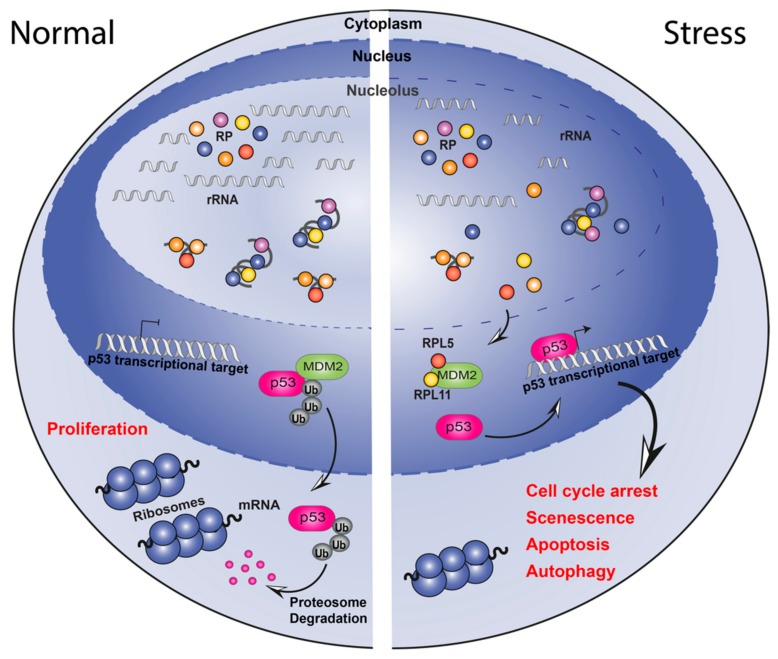Figure 2.
Schematic representation of the nucleolar surveillance pathway. Under normal growth conditions (left), ribosomal proteins (RPs) are assembled with ribosomal RNA into the 40S and 60S subunits in the nucleolus. p53 activity is maintained at low levels by ubiquitin-mediated degradation induced by MDM2. Following nucleolar stress (right), ribosome biogenesis is halted thus RPs, rRNAs, and other nucleolar proteins are released into the nucleoplasm. RPL5 and RPL11 are free to bind to MDM2 and prevent p53 ubiquitylation. p53 is then available for regulation of its target genes leading to cellular responses like cell cycle arrest, senescence, apoptosis and autophagy.

